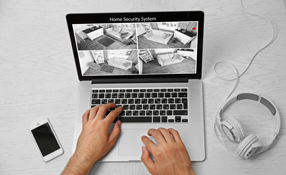 |
| There are between 4 and 6.8 million lone workers in the UK, and many of us are lone workers at some point in our working lives |
The Suzy Lamplugh Trust was set up to highlight the risk faced by lone workers and to offer information and advice to reduce the risk of violence and aggression for everyone.
It was established following the disappearance in 1986 of 25-year-old estate agent, Suzy Lamplugh, after she had gone to meet an unknown client. This article is based on a presentation given by Rachel Griffin, Director of the Trust, at the Lone Worker 2015 Conference in London.
What lessons had we learned over the last 29 years following the disappearance of Suzy Lamplugh?
Key principles of lone worker safety
- Assess the risk of the job you’re going to before going out.
- Know how you’re going to get out before you go in.
- Ensure someone knows where you’re going, how you’re getting there and back, and what to do if you don’t check in on time.
- Defusing and de-escalating rather than engaging – keep lines of communication open rather than meeting aggression with aggression.
- Trust your instinct – if a situation feels wrong then it probably is; make an excuse and leave.
There are plenty of definitions of personal safety but it’s important that each organisation defines what it means by personal safety, says Griffin.
And it’s not just about physical violence. It’s relatively rare that people get killed at work – there are 0.46 fatalities per 100,000 workers. Mental health is the biggest single factor for days off work – in 2014 mental health accounted for the most working days lost. Such illness can arise solely through verbal abuse at work.
Trade union survey on shop workers’ experience
Griffin then presented a survey by a trade union showing that 56% of shop workers’ experience verbal abuse in a year, while 4% experience violence. This contrasts with a survey of employers by the British Retail Consortium that has the figures 2.6% and 1.2% respectively, suggesting that shop workers are not reporting incidents to employers.
 |
| A positive safety culture is important when implementing tracking systems – employees must feel they are for their safety and not to keep tabs on them |
Current policy is directed at the tip of the safety “iceberg,” says Griffin, with resources aimed mainly at high-risk activities, which means there will be fewer inspections of what are perceived to be lower-risk activities.
It’s estimated that there are between 4 and 6.8 million lone workers in the UK, and that many of us are lone workers at some point in our working lives. Griffin’s clients tell her that pressure to work alone is increasing as budget cuts hit. In the housing sector, for example, workers increasingly face other issues that pose risk when they are on their own.
Safety culture & tracking systems in organisations
If you are introducing tracking or tracing systems, you need to persuade your staff that they are for their safety, rather than management keeping tabs on them.
In order to create a positive safety culture in your workplace you should:
- Agree a definition of personal safety for your organisation. This should include a definition of what constitutes violence and aggression.
- Listen to your workforce. Your lone workers understand their risks better than anyone, so they should be included in developing policy and procedures.
- Make reporting easy and blame free. Only when workers feel confident to report will your organisation understand the risks it faces and take steps to manage those risks.
- Support staff when an incident occurs, for example with an employee assistance programme/counselling.
- Question the culture of “we’ve always done it this way,” especially in high-risk activities such as home visits. Many organisations see going to clients’ homes to be essential when that service could be more safely delivered elsewhere.
- Train, train and retrain. Revisit training – including the use of any systems or devices – regularly, so that complacency doesn’t creep in.










































